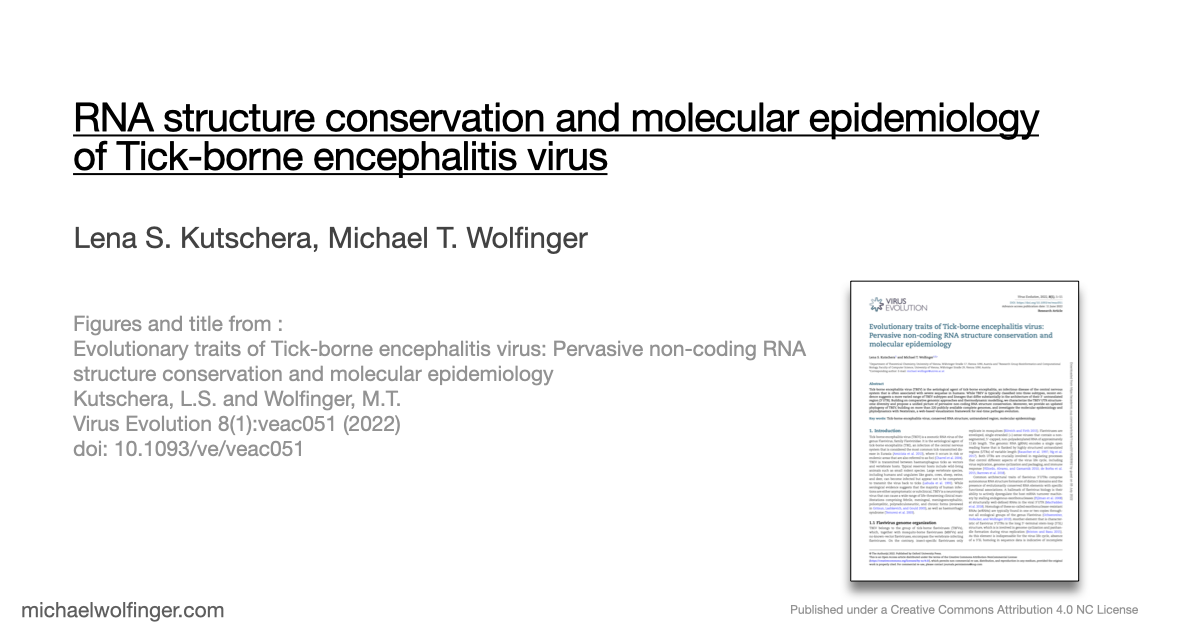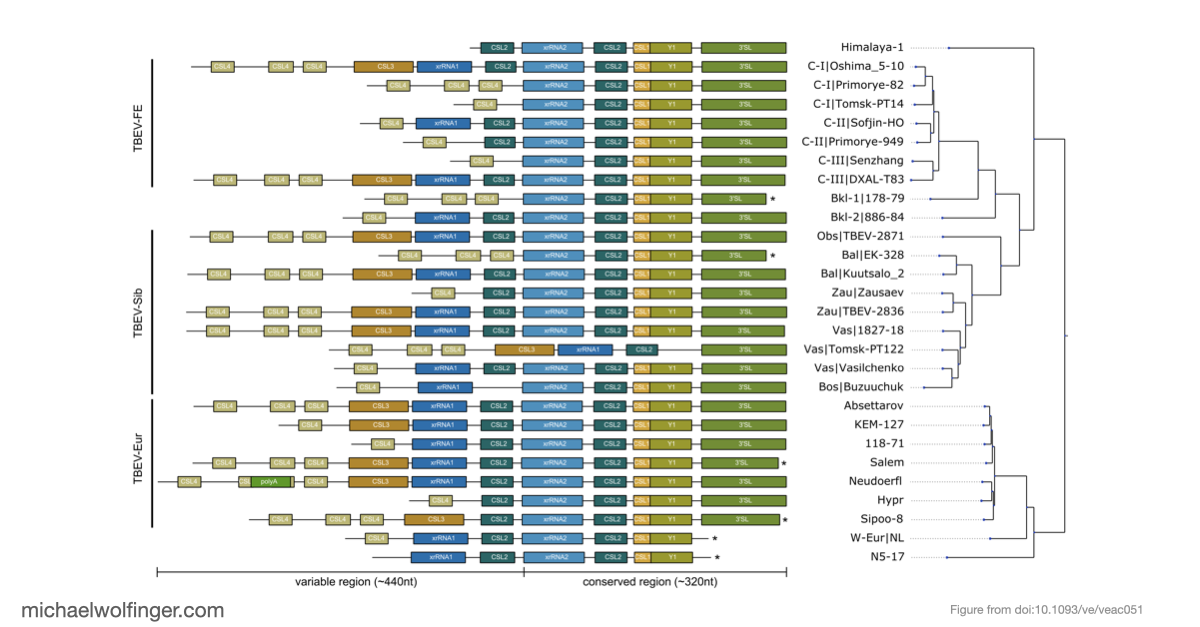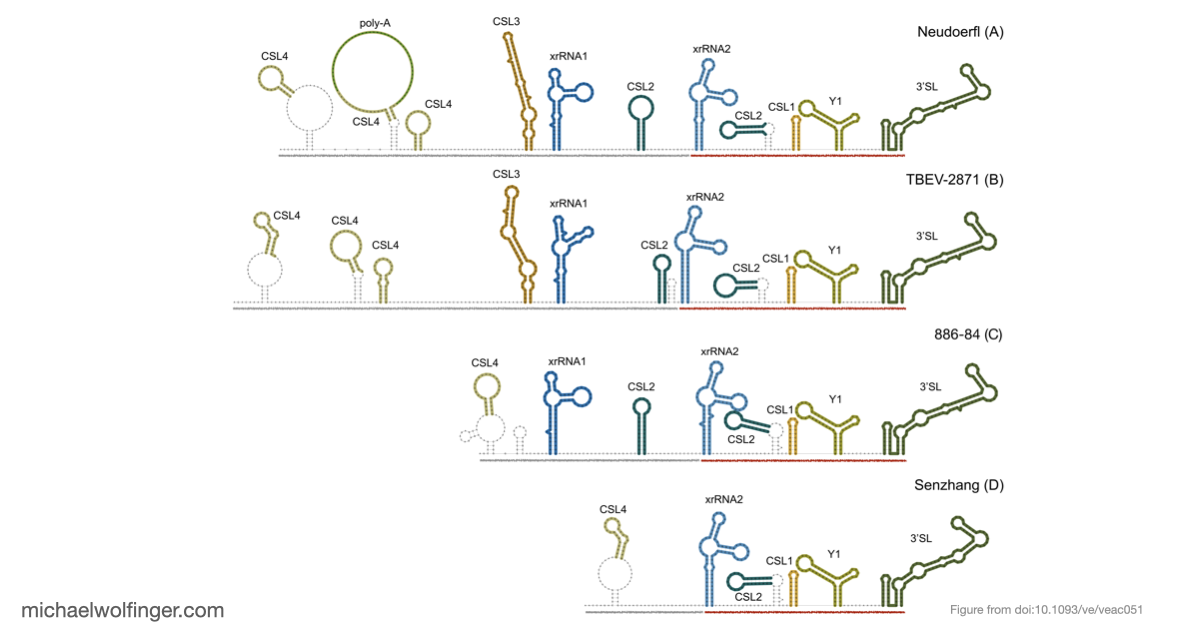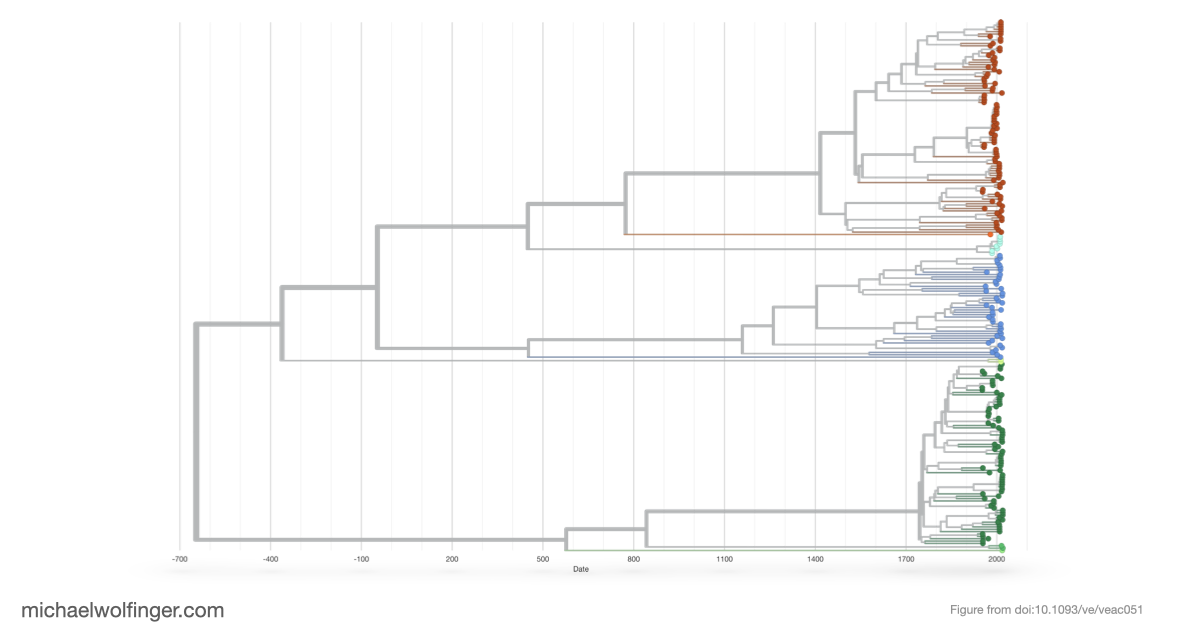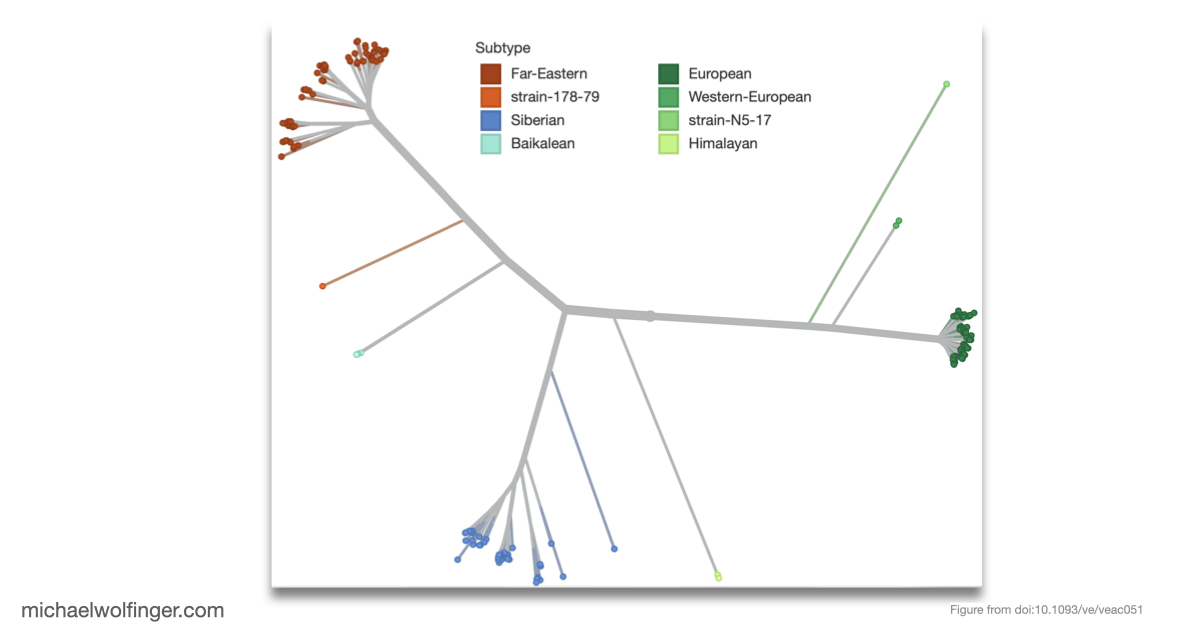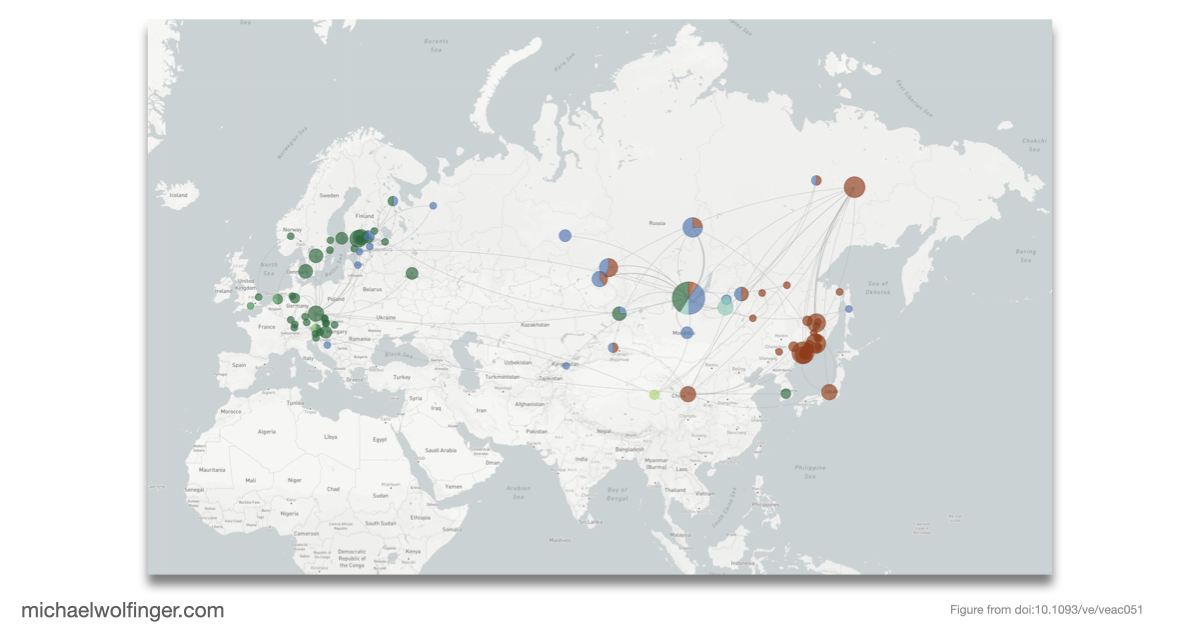RNA structure conservation and molecular epidemiology of TBEV
In this paper, we study the molecular epidemiology and RNA structureome diversity of tick-borne encephalitis virus (TBEV). Moreover, we propose a unified picture of pervasive non-coding RNA structure conservation across all known TBEV subtypes

This research aimed to understand the RNA structure conservation in the 3'UTR region of Tick-Borne Encephalitis Virus (TBEV), a flavivirus endemic in parts of Europe and Asia. The study revealed that the TBEV 3’UTRs contain two domains: a highly conserved core domain at the 3’end, and a variable region upstream. The core domain has five structured ncRNA elements, two of which are associated with virulence and virus replication. The variable region, responsible for the differences in genome lengths across subtypes, contains between two and four distinct structural elements. We show that the TBEV 3′ architectural diversity is realized by a combination of a restricted pool of eight structural and one non-structural element, suggesting that the observed 3′UTR variability is driven by structural, rather than sequence conservation.
The study also introduces TBEVnext, a dataset revealing spatiotemporal and phylodynamic characteristics of TBEV global spread. TBEVnext includes various TBEV subtypes and shows no strict association between TBEV subtypes and geographic occurrence. A timed phylogenetic tree inferred from this data provides insights into the ecological aspects of the global virus spread and unique properties of different strains.
From a One Health perspective, the findings of the study underscore the importance of understanding the intricate relationships between the virus's genetic makeup and its spread and adaptability across different regions and host species. By identifying the conserved and variable elements in TBEV 3’UTRs, researchers can gain insights into the mechanisms of virulence and replication, potentially guiding the development of targeted interventions. Additionally, the comprehensive view on the global spread of TBEV provided by TBEVnext emphasizes the need for integrated approaches that consider the interconnectedness of human, animal, and environmental health to effectively monitor and control such zoonotic diseases.
Figures and Data
Citation
Evolutionary traits of Tick-borne encephalitis virus: Pervasive non-coding RNA structure conservation and molecular epidemiology
Lena S. Kutschera, Michael T. Wolfinger
Virus Evol. (8):1 veac051 (2022) | doi: 10.1093/ve/veac051 | PDF | Supplementary data
See Also
Functional RNA Structures in the 3’UTR of Tick-Borne, Insect-Specific and No Known Vector Flaviviruses
Roman Ochsenreiter, Ivo L. Hofacker, Michael T. Wolfinger
Viruses 11:298 (2019) | doi:10.3390/v11030298 | PDF | Figures
Functional RNA Structures in the 3’UTR of Mosquito-Borne Flaviviruses
Michael T. Wolfinger, Roman Ochsenreiter, Ivo L. Hofacker
In Virus Bioinformatics, edited by Dmitrij Frishman and Manja Marz, pp65–100. Chapman and Hall/CRC Press (2021) | doi:10.1201/9781003097679-5 | Preprint PDF | Figures
